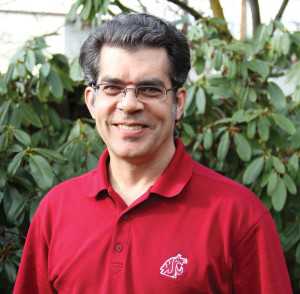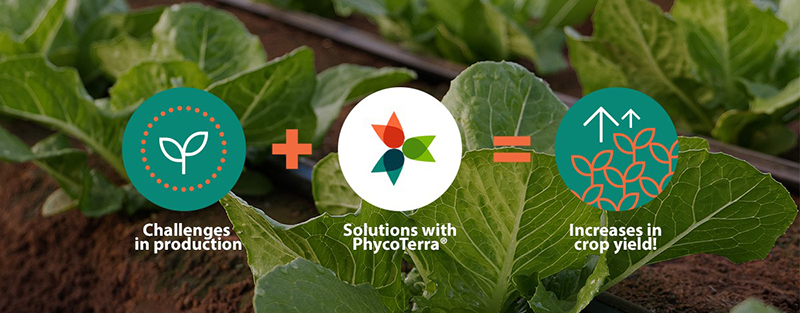Washington State University To Create Tree Fruit “One-Stop-Shop”
 Commercial tree fruit growers around the world desire reliable information for their education and to aid in decision-making. Oftentimes, however, they are overwhelmed by the vast amount of disparate information from varied sources that exist on the Internet. These same individuals are typically time-limited, some may lack technical savvy, and they may get frustrated when searching for meaningful information. The diversity of content, types and sources often make it difficult to decide what to trust and believe. In some cases, the information may be scientifically and factually correct but it may be inappropriate for the geographic location being considered (e.g., cultivar recommendations). In other cases, it may be biased, misleading, or factually incorrect.
Commercial tree fruit growers around the world desire reliable information for their education and to aid in decision-making. Oftentimes, however, they are overwhelmed by the vast amount of disparate information from varied sources that exist on the Internet. These same individuals are typically time-limited, some may lack technical savvy, and they may get frustrated when searching for meaningful information. The diversity of content, types and sources often make it difficult to decide what to trust and believe. In some cases, the information may be scientifically and factually correct but it may be inappropriate for the geographic location being considered (e.g., cultivar recommendations). In other cases, it may be biased, misleading, or factually incorrect.
However, the Cooperative Extension Service has been a reliable source of local, unbiased, research-based information for farmers for a century now. In 1914, the federal Smith-Lever Act established the Cooperative Extension Service at the land-grant universities in the United States. Information may be available through hands-on, in-the-field, or classroom training programs; educational field days or workshops; on-farm trials, printed Extension fact sheets, or production guides, etc. All of the participating state land-grant universities now have websites. Many offer significant online resources covering the major agricultural commodities important to their state. Less common are so-called “one-stop-shops” that serve as a portal to provide comprehensive information on a particular commodity.
The Need and Vision
In my role as Endowed Chair and Tree Fruit Extension Program Leader at Washington State University, one new project I am directing is the creation of a searchable, grower-friendly, comprehensive “one-stop-shop” tree fruit website focusing on apple, pear, sweet cherry, and other stone fruits. The site will primarily serve commercial tree fruit growers but it will have information for backyard growers and hobbyists too. The big picture, long-term goal is to create the single best tree fruit website in the world.
This is an enormous task. Already, there is a lot of good information that has been created for growers but it exists in many different places that are not well connected with each other. There is no blame casting here. Rather, like at many land-grant universities, websites have been created over time on limited budgets by several independent programs and individuals in different departments, units and locations around the state. There are some sophisticated and very active websites that are widely used by growers (e.g., Decision Aid System at das.wsu.edu). Other websites that were created with a specific programmatic emphasis have become dated because the previous investigators retired and their positions were not refilled. Some websites were created as stand-alone products as a result of regionally or nationally funded projects. When the grant funding ran out, resources to maintain these websites evaporated. Certainly, some of the older information is still useful and valid, but some may be outdated and obsolete. As one of my colleagues recently described it, the latter is a “digital graveyard” of sorts.
The Process
Critical to moving the process forward on such a large project is developing a team of personnel who have both a vested interest in the project and a willingness to devote time to its success. The team needs to have information technology (IT) resources and support that are sufficient for the task. It needs to meet regularly to discuss various aspects of the project, assign tasks, and generate ideas. A thorough inventory of web content needs to be conducted across all relevant websites to determine what resources will be utilized for the new site, those that need updating or repackaging, and others that will not be included.
Since the website will be new, a user/grower survey needs to be conducted to help inform how it will be constructed, what features it will have, how one will navigate it, how it will integrate with and complement existing sites, etc. A landing page needs to be created that is simple, intuitive, and that will quickly and easily direct the visitor to content. This should include easy cues to audience, crop, and topical navigation. It needs a “search” box that delivers relevant information as effectively as possible, enabling visitors to cull through massive amounts of data. It should offer the ability for users to subscribe to and define particular information that they can have pushed to them or featured for them. Along the way in the development process, a beta group of industry users needs to be engaged to test, validate, and improve what is being created so that it is user-friendly.
Our Progress
We began this project in earnest this year with a goal of launching something to the public in December 2014. We had nearly 300 respondents to our industry survey and gleaned some really valuable data. We have developed a website concept and are nearing the completion of our audit inventory. We identified many thousands of pieces of content that we need to sift through and catalogue.
A top priority for our team is the creation of high-quality, peer-reviewed resources that are timely, relevant, and utilize state-of-the-art features and tools. To help busy researchers reach the grower audience with timely information, we will encourage partnering them with Extension and technology specialists to create user-friendly online resources. We hope to enlist graduate students to help in preparing reviews of the scientific literature that will describe and summarize the state of knowledge in particular research areas. Two long-term goals include creating and offering online courses for training and certification and providing as much content as possible in Spanish.
The Long-Term Sustaining Effort
The creation, maintenance and long-term enhancement of such a Web resource will not be possible without the long-term sustaining power of the financial support from industry. Fortunately, as I noted in my March 2014 column “The Power of Partnering”, one of the priorities of the WSU Tree Fruit Endowment, funded by grower assessments, is supporting world-class information and technology transfer. Look forward to my column in a future issue of American/Western Fruit Grower where we introduce you to the new website and describe its many features.










